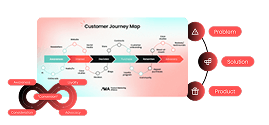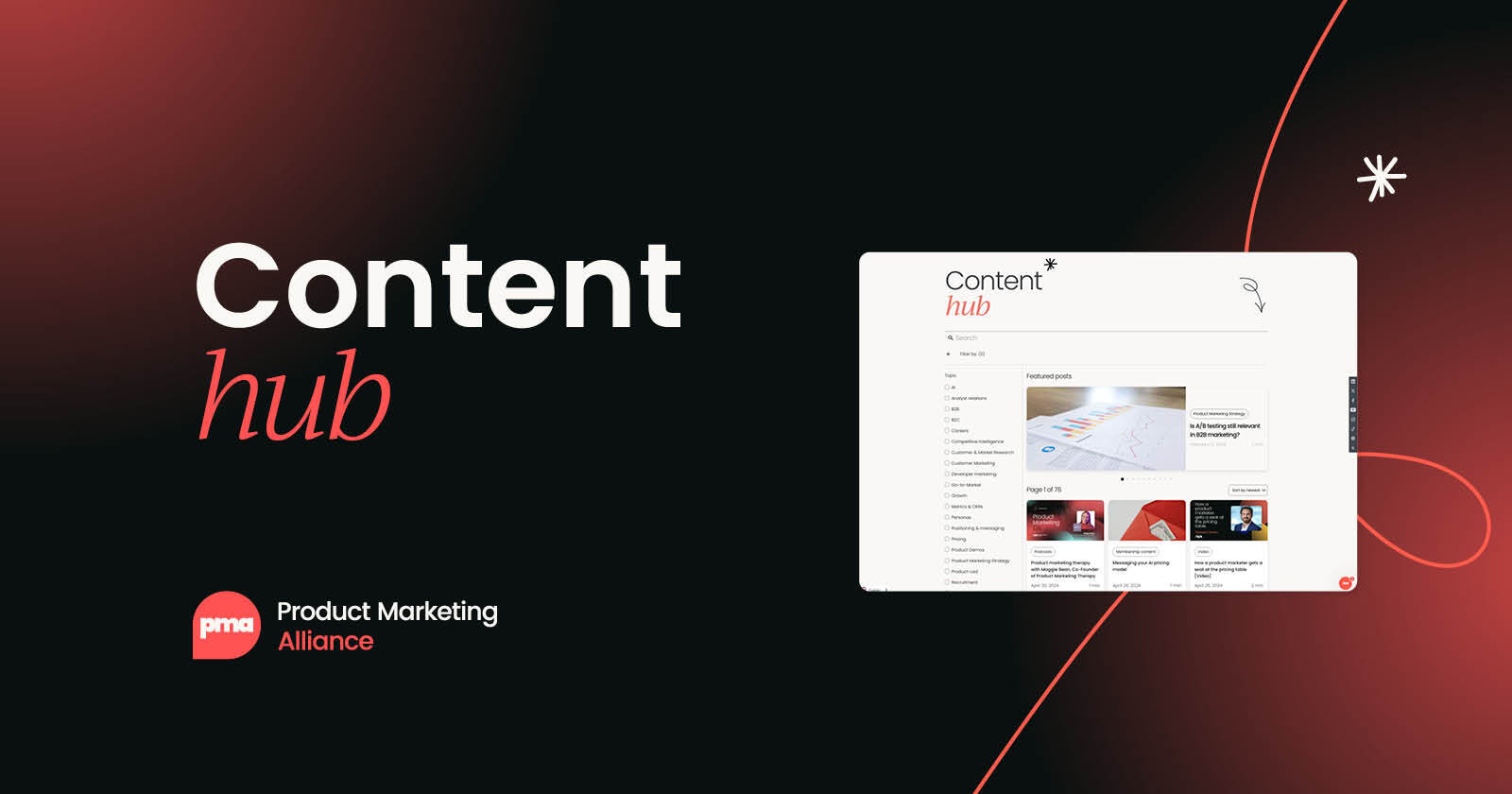Monzo has built a reputation as one of the most innovative and customer-friendly banks in the UK. As a digital-first challenger bank, we’ve grown rapidly since our launch in 2015, amassing over 3.5 million customers, and welcoming 40,000 new customers every week.
Much of this growth has been driven by strong word-of-mouth marketing and Monzo’s standout features—fee-free spending abroad, real-time spending notifications, and smart budgeting tools.
But while Monzo has succeeded in becoming a go-to spending account, this success has also created an unintended challenge: customers see it as a secondary account rather than their primary bank.
Our research revealed that while users loved Monzo for its sleek interface and financial management tools, they weren’t switching their salaries or paying their bills through the platform.
Instead, traditional banks remained their main financial home, with Monzo acting as an “extra” account for everyday spending.
This misalignment between perception and ambition became a key focus for Monzo’s product marketing team.
We’d been successful in building a fully-fledged current account, complete with overdrafts, loans, and bill management features—yet customers still saw us as little more than a budgeting tool.
Addressing this disconnect became a strategic priority for what was a young product marketing team.
In this article, I’ll take you through how Monzo’s PMM function tackled this challenge head-on.
Through a combination of customer research, messaging shifts, and new feature development, we embarked on a journey to reposition Monzo from a handy spending card to a bank customers could trust with all their money.
Here’s how we did it.
Shedding the ‘secondary account’ perception
A couple of years ago, our CEO and co-founder, Tom Bonfield, stated that our singular focus was to be the best current account in the world.
That ambition hasn't changed – but there was a perception problem we had to tackle in order to get there. For many customers, Monzo was synonymous with effortless spending.
Whether it was fee-free transactions abroad, instant spending notifications, or budgeting tools that helped users track their expenses, we’d had successfully positioned the app as a convenient and user-friendly financial companion.
However, this positioning—while effective for growth—presented a major challenge: Most users didn’t see Monzo as their main bank account.
During user research, Monzo’s product marketing team uncovered a clear pattern.
Customers overwhelmingly used Monzo for day-to-day spending, travel, and budgeting, but when asked why they hadn’t made the switch to using it as their primary account, they cited a few key reasons:
- A strong sense of inertia – Many users felt that their current banking setup “worked just fine” and saw no urgent need to switch.
- Separation of finances – Users liked the idea of keeping their main bank account for bills and salary deposits while using Monzo as a secondary spending account to better control discretionary expenses.
- A lack of trust for core banking needs – While Monzo had built trust around security and customer service, traditional banks were still seen as the more reliable option for managing salaries, savings, and bill payments.
The way Monzo marketed itself also reinforced this perception.
The bank’s content and advertising often focused on spending-related features, from budgeting tools to seamless overseas payments.
Its website emphasized daily spending rather than full-service banking, and its well-known coral-colored card became a viral symbol of Monzo’s brand—so much so that customers often joined simply after seeing a friend use it.
Even within Monzo’s own community, user-generated content was often centered around travel and spending, reinforcing the idea that Monzo was a great financial tool but not necessarily a primary account.
While this positioning had fueled rapid customer acquisition, it was at odds with our long-term mission. The challenge for the product marketing then became to redefine how customers viewed the bank—moving from a secondary spending tool to a trusted financial home.
Monzo's repositioning strategy
With a clear understanding of the perception gap, we developed a strategy to shift customer behavior and reframe Monzo as a bank that could handle all aspects of personal finance.
Our approach centered on three key areas: (1) changing the product narrative, (2) refining messaging and brand positioning, and (3) measuring the impact of these efforts.
Step 1: Changing the product narrative
To encourage customers to use Monzo as their primary account, we needed to address the very reasons users were hesitant to switch.
Through extensive research, the PMM team learned that customers valued separation between spending, bills, and savings—but they also preferred having everything in one place.
The solution was to build new features that allowed users to maintain that separation while consolidating their finances under Monzo.
Salary Sorter and Bills Pots
Customers who enjoyed using Monzo as a spending account didn’t necessarily want to mix their everyday expenses with bills and savings.
Monzo introduced Salary Sorter, which allows users to automatically divide their paycheck into different “pots” for spending, bills, and savings as soon as it lands in their account.
This way, customers could keep financial separation without needing multiple banks.
Get paid early
To increase the appeal of switching salaries to Monzo, the bank launched "Get Paid Early," a feature that allows customers to access their salary a day before payday at no extra cost. This provided an immediate, tangible benefit to moving salary deposits over to Monzo.
Enhancing trust signals
To address concerns around security and reliability, we began emphasizing trust indicators such as its FSCS protection (Financial Services Compensation Scheme), which ensures deposits are safeguarded up to £85,000, and its strong record in preventing fraud.
Step 2: Shifting messaging and brand positioning
While new features helped solve functional concerns, it was clear that we also needed to change how we communicated our value.
The team made several key adjustments across our website, marketing, and customer engagement efforts to reposition Monzo as a primary bank account.
Website overhaul
Previously, Monzo’s website primarily showcased budgeting and spending tools.
The redesigned website made Monzo’s role as a bank more explicit—highlighting salary deposits, bill payments, savings, and lending products.
The FSCS logo and bank-switching options were made more prominent to build credibility.
A new content approach
Monzo’s content strategy had traditionally leaned heavily toward spending-related topics.
The shift in positioning meant expanding content themes to focus on financial well-being, savings strategies, and bill management, reinforcing Monzo’s ability to handle all aspects of banking.
Refined social media and advertising
Monzo moved beyond featuring just the iconic coral card in its ads. Instead, new creative campaigns highlighted salary payments, bill pots, and getting paid early—making Monzo’s full financial ecosystem more visible.

Step 3: Measuring the impact
Repositioning a bank is no small task, and we knew this transition wouldn’t happen overnight.
Changing banking habits is a slow process, and customers rarely switch their main account on impulse. To track progress, Monzo used a mix of quantitative and qualitative measures:
Monitoring customer behavior
The team tracked how many users were depositing salaries, using bill pots, and engaging with savings features over time.
Gradual usage shifts
Rather than expecting customers to immediately switch, Monzo focused on incremental behavior changes—such as users opening a savings pot or setting up a bill payment, which indicated deeper engagement with Monzo as a primary account.
Customer sentiment tracking
Through continuous user research and surveys, Monzo assessed how customer perception evolved and whether trust in Monzo as a main bank was increasing.

Although we didn’t publicly share exact figures, early signs showed a steady increase in main account usage, validating the effectiveness of the new strategy.
Challenges and lessons learned
Repositioning Monzo as a full-service bank was not without its challenges. Some of the key lessons we learned included:
- Competing with traditional banks – While legacy banks have been slower to innovate, they've started replicating challenger bank features. However, Monzo’s ability to move quickly and continually improve the customer experience remains a key advantage.
- Overcoming customer inertia – Banking habits are deeply ingrained, and many users were comfortable with their traditional banks despite Monzo’s features. Repositioning required repeated messaging and persistent nudges to encourage change.
- Balancing long-term vs. short-term impact – Unlike other product launches, repositioning Monzo was a long-term effort. The marketing team had to align short-term wins (e.g., customer adoption of Salary Sorter) with the broader goal of increasing full account usage over time.
What’s next for Monzo?
While we've made significant strides in shifting its perception, the journey is far from over. Some of the next steps for the company include:
- Deeper integration within customers’ financial lives – Expanding financial services, such as investment options, insurance, or mortgage integrations.
- Expanding beyond millennial users – Monzo is widely seen as a “millennial bank,” but broadening its appeal to older demographics could be key to further growth.
- International Expansion – As Monzo looks to enter new markets, particularly the U.S., its messaging and product positioning will need to adapt to new banking behaviors and customer expectations.
What can PMMs take from our repositioning journey?
Monzo’s repositioning journey is a case study in the power of product marketing, customer research, and brand messaging.
By recognizing the disconnect between perception and ambition, the team strategically built new features, refined communication, and reinforced trust—leading to a gradual but measurable shift in user behavior.
For product marketers, Monzo’s experience offers valuable insights:
- Customer perception is shaped not just by what a company says, but how it reinforces those messages through product design, content, and user experience.
- Changing user behavior—especially in industries with high inertia like banking—requires a mix of compelling features, strong incentives, and persistent messaging.
- Trust and credibility are critical when asking customers to make a significant switch, especially with something as personal as their finances.
While Monzo’s transformation is still unfolding, its strategic approach demonstrates how product marketing can drive meaningful brand repositioning—even in a highly competitive industry.
This article is based on Sheri's talk at the 2019 Product Marketing Summit, London. You can watch every talk from the summit here on YouTube. At the time of the Summit, Sheri was Product Marketing Manager at Monzo. She has since moved to SumUp, where she is Product Marketing Lead.


















 Follow us on LinkedIn
Follow us on LinkedIn





.svg?v=8baa8b859a)